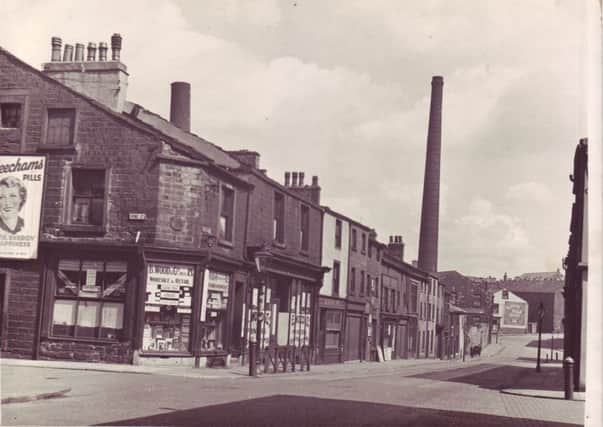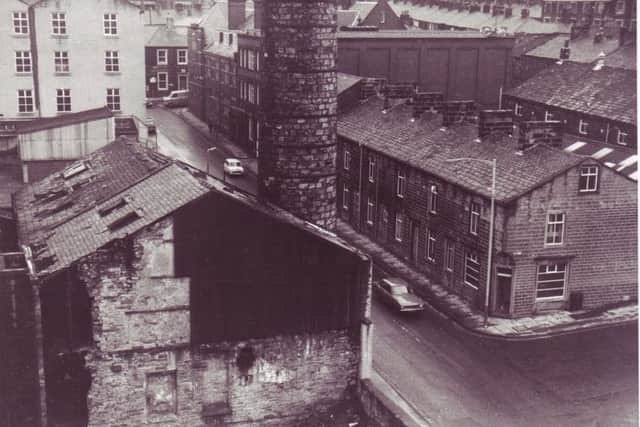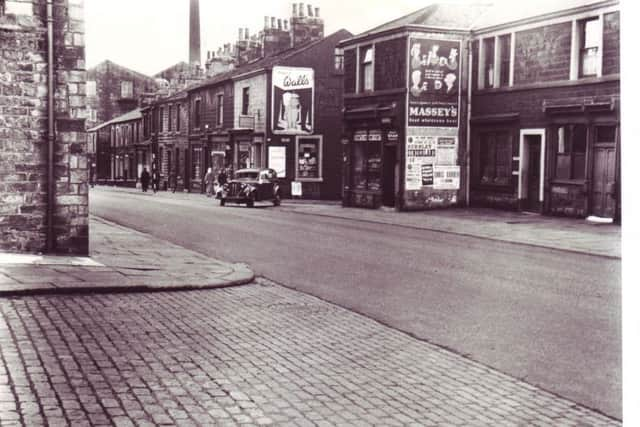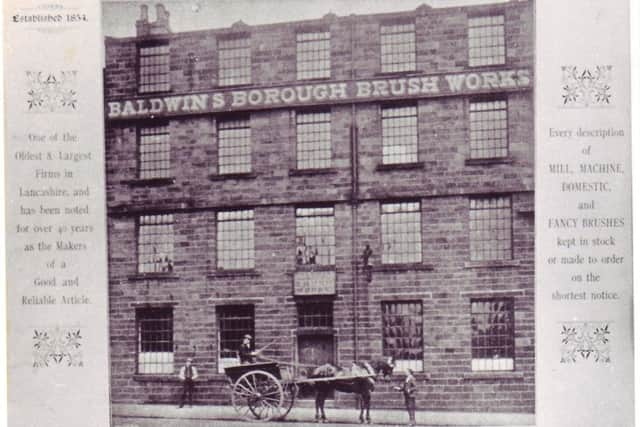Curzon Street’s busy history


In that article I mentioned the Lancashire and Yorkshire (later LMS) Railway Company’s great stables were in Curzon Street. But, in conversation with the lady who recalled the days when the stables were still in operation, I realised they were not in Curzon Street at all, but Canning Street.
This is an easy mistake to make as the bridge that carries the railway over the road, near Bank Top, otherwise Central Station, is the dividing line. The lower part is Curzon Street but the upper is Canning Street and the first buildings, to the left, just beyond the bridge, constituted the stables. They occupied a large plot of land to the east of Warwick Street and Stanhope Street, a stone’s throw from both Stoneyholme Gas Works and the extensive goods yards at Bank Top.
Advertisement
Hide AdAdvertisement
Hide AdCurzon Street takes its name from the Curzon family, once landowners in Burnley. The Curzons were related to the Asshetons of Downham and the first Earl Howe (1726-99). He was a naval officer who distinguished himself in the Seven Years War and the French Revolutionary Wars at the end of the 18th Century. In the latter he was the victor, in 1794, at the Battle of Brest, which is also remembered as the “Glorious First of June”, where Lord Howe won a great victory over the French. As you will know, Howe Street was the first street off Curzon Street, to both the right and left. Today Howe Street is recalled as Howe Walk in Charter Walk Shopping Centre.


As with other articles in this occasional series, when I look at Burnley’s roads and streets, I will describe the route taken by the street and some of the properties associated with it.
Curzon Street begins at its junction with St James’s Street by the present Marks and Spencer Stores. M&S occupy the property on the left where the Royal Oak Hotel once stood.
The Royal Oak (its address was 2 and 4 Curzon Street) was, in its day, one of the best known of Burnley’s pubs. According to Jack Nadin, in his book “Burnley Inns and Taverns”, the building dated from about 1824. This is about right as it was at this time that this part of Burnley was being developed. The building occupied the end plot of a complicated development which also included the Scarlett Arms which was at 48 Howe Street.
Advertisement
Hide AdAdvertisement
Hide AdJust beyond the Royal Oak, which closed c1931 when the M&S store was planned, there were two shops, a butcher’s and what, in 1899, was described as an eating house. The latter property was kept by Henry Clegg and his address was 10 Curzon Street. The butcher’s shop, at 6 Curzon Street, was run by Thomas Heyworth, who also had a shop at 167 Oxford Road.


Then came Howe Street which went through to Bethesda Street.
It was on this part of Howe Street that the Scarlett Arms could be found. On the other side of Howe Street the properties you see in the first of today’s pictures were the next on Curzon Street.
This picture is a very interesting one and shows quite a run of Curzon Street as I recall it.
Advertisement
Hide AdAdvertisement
Hide AdIn 1953 the first shop was occupied by Edwin Wood and Co. (Burnley) Ltd. In the Commercial Directory of that year they were described as “printers”, though I recall they occupied premises in Trafalgar Street after this property was demolished in the 1960s. The building was a large one and, in 1899, part of it (possibly number 12 originally) was occupied by Mrs Martha Bracewell, milliner and mantle maker, who also has premises at 80 St James’s Street and in the Market Hall. I suspect the building next door, number 14, (it has a higher roof line) was occupied by John Smith, a painter.


When the picture was taken the whole building was occupied by Wood’s and an interesting comparison can be made between the businesses operating on this row in 1899 when compared to 1953. In the former year virtually all of the buildings were occupied by shops and small businesses. They included a grocer at number 18, another printer at number 20, a boot top maker at 22 and a fruiterer at number 34.
By comparison, in 1953, a number of the shops were vacant but the businesses I remember, the wholesale green grocers such at Wyatt and Palmer and Bentley and Sons, at number 16 and numbers 20-22 respectively, were present. At number 30 there was Ruth’s Ices, the makers of delicious ice creams.
There is an advertising poster on the Howe Street elevation in the first photo. It is for Beecham’s Pills, but what you might not realise is that Beecham’s famous rivals, the Burnley firm of Parkinson’s, had their factory, offices and laboratory in Curzon Street. You can just about see them, in the distance, on the right in this photo. The advert here proudly reminds us Parkinson’s Pills were made in Burnley. It is located on the gable end of a block of property which had been built by Parkinson’s.
Advertisement
Hide AdAdvertisement
Hide AdThe second picture shows the same building as it was is 1973. Starting on the right, Parkinson’s occupied the stone built properties as offices. It is the end building, with its three distinctive windows, that had displayed the “Parkinson’s Pills” advert. Behind the mill chimney, you can see a brick building. This was Parkinson’s laboratories and, on the left of the photo, the tall building, at the top, was the factory in which Parkinson’s myriad of medicines were made.
Since I acquired the first of the two photos so far noted, I have often wondered if Beecham’s placed this advert close to their rivals premises deliberately. Similarly, I have asked myself whether Parkinson’s did the same in St Helen’s where Beecham’s had their factory.
Getting back to Curzon Street – after the row of shops shown in the first picture came Brun Street which linked Curzon Street to Brown Street. To the right of Brun Street, so called as it was adjacent to the river, there were the mill buildings you can see in the first image. These were Bankfield Shed, Bankfield Mill, the Bethesda Street Foundry and the Grocery Warehouse of Burnley Co-op.
Bankfield Shed was, in postal terms, in Brun Street and, in 1899, was occupied by Holgate Brothers Ltd who were cotton manufacturers. The mill behind, Bankfield Mill, was home of one of Burnley’s larger textile firms, John Barnes and Son cotton spinners and manufacturers. John was Burnley’s second mayor, succeeding to that office in 1862. He lived at Reedley Hall, which according to Jack Nadin, was known locally as “Barnes Manor” or “Barnes Hall”.
Advertisement
Hide AdAdvertisement
Hide AdIt was in this latter building Parkinson’s had their factory. As indicated, it can be seen in the second of today’s pictures which was taken four years before the building was consumed in a huge fire. The walls and foundations remained for a number of years but the greater part of the mill was occupied by Leo’s Co-operative superstore, later known as Pioneer.
On the other side of the mills, and the junction with Bankhouse Street, the properties you can see in the third photo continued Curzon Street to the railway bridge. This image may have been taken in 1957 and some of you will recall, if not the businesses, the buildings. The one on the extreme right is the Queen’s Hotel which was at 80-82 Curson Street.
From here it was only a few yards to the bridge where Curzon Street came to an end to be replaced by Canning Street. On the other side of Curzon Street the best known building, in the later 19th and early 20th Centuries, was W. and J. Baldwin’s Brush Works. Part of this building is still standing as a motor spares store.
Another prominent building was the County Court, part of which you can see in the second picture. We then come down Curzon Street, the Victorian Market Hall, which stood off Curzon Street in its own Market Place could be seen from the junction with Market Street though there was a terrace of shops and warehouses between Market Street and Howe Street.
Advertisement
Hide AdAdvertisement
Hide AdI could have spent more time considering Curzon Street and have omitted bits I could have added but, for those of you of a certain age, look at the four pictures. They will bring the memories rolling back.